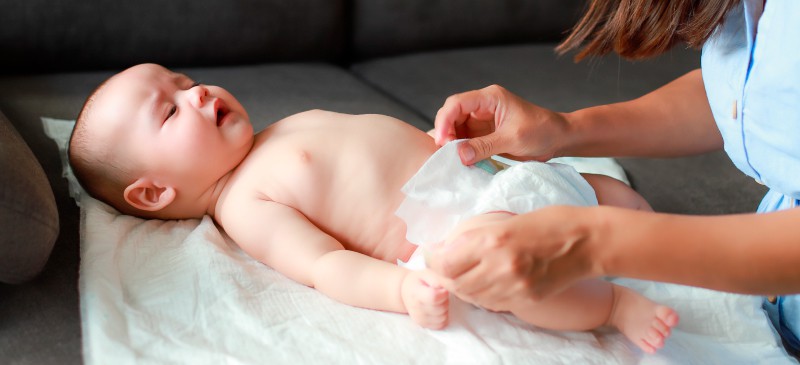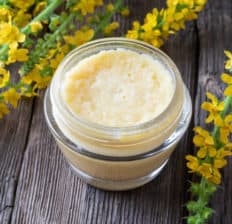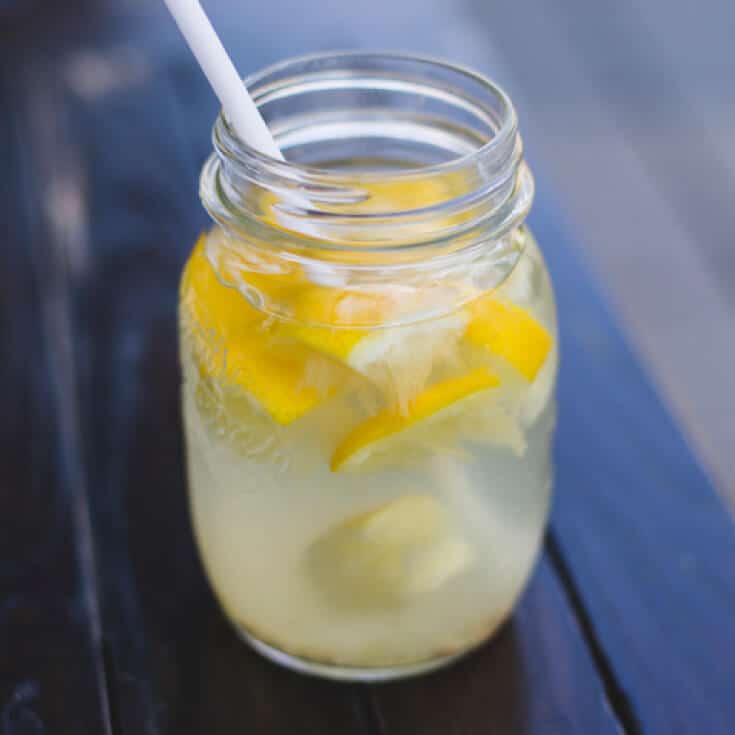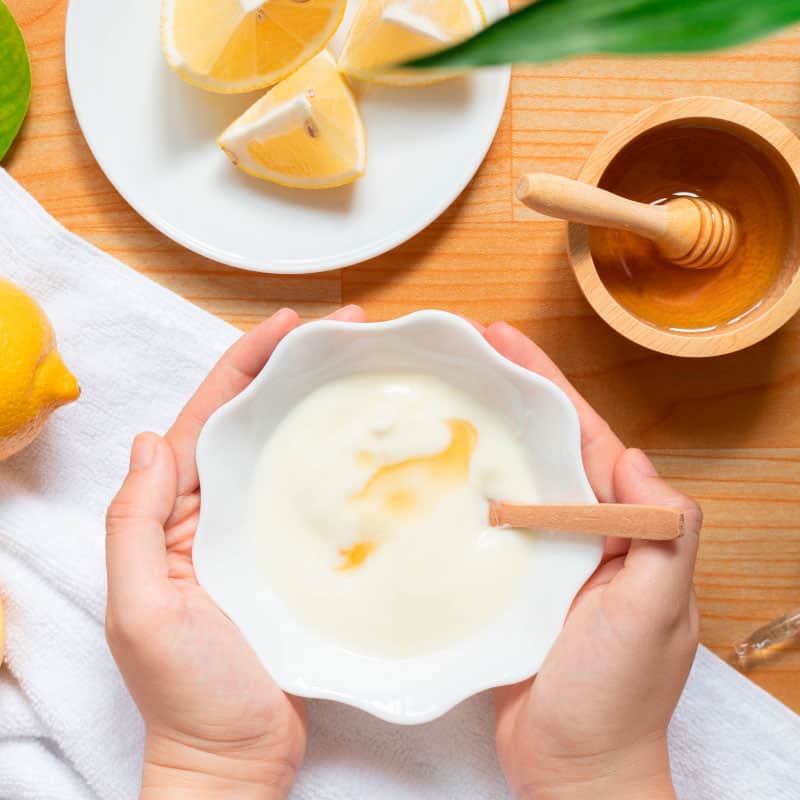This Dr. Axe content is medically reviewed or fact checked to ensure factually accurate information.
With strict editorial sourcing guidelines, we only link to academic research institutions, reputable media sites and, when research is available, medically peer-reviewed studies. Note that the numbers in parentheses (1, 2, etc.) are clickable links to these studies.
The information in our articles is NOT intended to replace a one-on-one relationship with a qualified health care professional and is not intended as medical advice.
This article is based on scientific evidence, written by experts and fact checked by our trained editorial staff. Note that the numbers in parentheses (1, 2, etc.) are clickable links to medically peer-reviewed studies.
Our team includes licensed nutritionists and dietitians, certified health education specialists, as well as certified strength and conditioning specialists, personal trainers and corrective exercise specialists. Our team aims to be not only thorough with its research, but also objective and unbiased.
The information in our articles is NOT intended to replace a one-on-one relationship with a qualified health care professional and is not intended as medical advice.
Diaper Rash Remedies, Including a DIY Cream
February 18, 2022

For a loving parent or guardian, seeing a rash on their child’s bottom is upsetting simply because of the obvious discomfort it causes. But what is diaper rash? Diaper rash occurs on the skin under the diaper and usually happens at the age of 2 years and younger, or as long as they are wearing diapers. If not treated, the result can become severe and even result in a yeast infection.
Diaper dermatitis is referred to the inflammation in outer layers of the skin in the perineal area, lower abdomen and inner thighs. The lesions are flat, discolored spots on the skin and are usually itchy, which may cause bacterial or candida infection. This can also affect the penis or vaginal area leading to urinary infection and further discomfort, irritability and restlessness for your baby.
While it’s most common in infants, adults that are unable to take care of themselves or that may require wearing adult diapers can also get diaper rash. As annoying as a diaper rash can be, not to mention the discomfort it causes your little one, it can be easily treatable, and even preventable, in most cases.
What Causes Diaper Rash?
A diaper rash or a yeast rash can be caused by infrequent diaper changes, diarrhea and sudden changes in diet, such as solid foods as well as the foods that mom eats, especially if breastfeeding. Antibiotics, an illness, friction caused by a diaper that is too tight or a constant rubbing of some sort often seen when a baby is between sizes, laundry detergents, bacterial or yeast infections, allergies and other sensitivities to disposable diapers are other common causes of diaper rash.
In particular, when urine and fecal matter are pressed against the skin, the bacteria can break down the skin’s protective barrier, which is where the rash often starts. The rash can occur because of a lot of sitting or lying in bed, especially if a diaper is soiled and left unchanged for long periods of time. Diaper rash often occurs due to the acidity changes in bowel movements as infants begin eating solid food. This is around the age 9–12 months and when babies are sitting most of the time.
Another name for diaper rash is diaper (napkin) dermatitis and is one of the most common “dermatologic diseases” in infants and children. In the past, diaper rash and diaper irritations have been thought to be caused by ammonia, but studies now indicate that there are many reasons a diaper rash may occur.
If you leave the diaper rash untreated, it can progress to a yeast infection because yeast loves the warm, moist and dark environment that a diaper easily provides. A study was conducted that showed that the highest incidence of diaper rash, in over 1,200 infants, was found in those that wore cloth diapers. If using cloth diapers, you may need to change the diapers more frequently and make sure to use a very mild detergent.
Related: Baby Powder Asbestos Dangers: Should You Worry?
How to Prevent
1. Change that Diaper More Often
The biggest cause of diaper rash is leaving a dirty diaper, wet or poopy, on the baby for too long! It’s common to have to change a diaper even 8–10 times a day, but no need to count. Just do it as needed by paying attention.
If left untreated, Candida and bacterial infections can make things worse, even causing psoriasis and the other diseases. It’s critical that your baby is kept clean by keeping the diaper area dry through frequent diaper changes.
2. Avoid Most Baby Wipes
While it seems that the baby wipe is the perfect go-to tool for just about anything, baby wipes actually contain some ingredients that can irritate the skin. The typical baby wipe contains ingredients like parabens, which are known as endocrine disruptors, propylene glycol, phenoxyethanol, phthalates for fragrance and other chemicals as well as possible carcinogens, like formaldehyde, that can be obtained through the manufacturing process.
Additionally, our environment is negatively affected by the use of these chemical-laden wipes. Instead, use fragrance-free baby wipes or simply a moist washcloth. If you use soap, make sure its also fragrance-free.
3. Make Sure Your Baby’s Bottom Is Dry
Rather than using a towel, allow your baby’s bottom to air dry before putting another diaper on him or her. This can help prevent bacteria-causing moisture and, therefore, diaper rash.
4. Give Your Baby the Right Sized Diaper
A diaper that’s too tight can prevent air from getting into the diaper region. This can create a moist environment that causes a diaper rash.
5. Do Not Use Baby Powder
Often the recommendation is to sprinkle on some “baby powder” on a baby’s bum before putting on a fresh diaper. But baby powder is a product name for talcum powder, which is made from talc, a clay mineral that contains magnesium, silicon and oxygen.
Talc is mined in proximity to asbestos, another naturally occurring mineral that is known to possess carcinogenic effects.
Many studies in women, infants, children and male miners or millers suggest that inhaling talc or applying products containing talc to the skin can cause health problems.
In fact, a New York Times article published in August, 2017 indicated that a judge ordered baby powder manufacturer Johnson & Johnson to pay $417 million dollars in damages to a 63-year-old woman who developed ovarian cancer after using baby powder on her genital area when she was eleven years old. There have been more than 5,000 baby powder–related cases against Johnson & Johnson, with lawsuits claiming carcinogenic effects. Damages to Johnson & Johnson between 2016 and 2017 exceeded $700 million dollars.
A Reuters special report noted that Johnson & Johnson knew for decades that asbestos lurked in its baby powder.
6. Give Your Baby the Right Foods
Often times, diarrhea is the cause of diaper rash and irritations. If that is the case, you need to stop the diarrhea as soon as possible. Have you heard of the BRAT diet? Bread, rice, applesauce and toast (BRAT) are common foods that can help rid your baby of the uncomfortable diaper-rash causing diarrhea.
Of course, it depends on the age of the infant in terms of what they can eat and you may have to soften the foods accordingly so that it is safe and easy to eat. Toddlers can eat more solid foods such as pasta, chopped up soft-boiled eggs, plain probiotic-containing yogurt and fermented whole grains. Because starch adds bulk to the stool, it is a great choice and easy to digest. Keep in mind that fats and sugars, even those from and fruit juices, can make the problem worse.
Natural Remedies
1. Magnesium Oil
It’s common to apply topical ointments such as steroids but they can cause problems for ultra-sensitive skin. Magnesium oil, known for its anti-inflammatory and wound-healing properties, may be able to help heal diaper rash quickly. (Mineral oil can also be effective.)
In a clinical trial study in the Pediatric Ward of Hajar Hospital, 64 children less than two years of age with diaper dermatitis were treated with the combined cream magnesium 2% and calendula or with Calendula cream alone. The study found that the magnesium cream was very effective for treatment of diaper dermatitis.
2. Bentonite Clay
Bentonite clay has been well known for clearing the skin from acne because of its ability to remove toxins and impurities, but it can also help heal the baby’s diaper rash. According to a study, a shampoo made of clay was found to heal 93.3 percent of the lesions from diaper rash within the first six hours.
Bentonite clay is a type of rock formed from volcanic ash. It’s highly absorbent, and when it becomes saturated with liquid, it develops a mild electrical charge that helps draw out toxins, heavy metals and other impurities away from skin tissue, ultimately helping to control moisture and fight bacteria that could make the diaper rash worse.
Try mixing a small amount of bentonite clay with water until it forms a paste. Then, spread on the baby’s bottom and allow it to dry. This may be your biggest challenge since babies usually don’t sit still for very long. Perhaps this is a good time for a little storybook reading or a standing activity! It usually dries within about 10–15 minutes. Once dry, remove with warm water.
3. Coconut Oil
It works for almost anything, but coconut oil for diaper rash? You bet. It contains three fatty acids — capric, caprylic and lauric acid — that possess both disinfectant and antimicrobial properties, helping to protect against as well as heal microbial infections. Studies indicate that it’s effective against bacteria-related issues like skin infections.
This is why organic coconut oil for diaper rash is so popular. It keeps bacteria at bay and can help to fight infections that cause rashes in the first place.
4. DIY Diaper Cream
Making your own diaper rash cream is easy and is also really important to the health of your baby! While it’s easy to pick up diaper rash cream products in the drugstore, many of these creams and ointments contain chemical-containing emulsifiers that can enter the body through the skin.
Instead, make up your own DIY diaper cream with shea butter, coconut oil, beeswax and calendula, among other skin-improving ingredients. Shea butter is the perfect ingredient for diaper rash ointment since it’s antifungal and anti-inflammatory, which helps fight off yeast. Natural moisturizing beeswax also includes antibacterial properties and is ideal for a diaper rash ointment.
Witch hazel contains strong antioxidant and astringent properties, helping skin to heal. And calendula contains anti-inflammatory linoleic acid, which helps reduce further irritation from diaper rash as well as possibly preventing it in the first place. See how to make it below.
Precautions
While there are some simple ways to protect your baby and help your baby heal quickly, pay close attention to anything you put on your baby. If it seems to worsen the problem in any way, discontinue use and check with your doctor.
It is common for many parents like to use baby powder in an effort to reduce moisture in the diaper area of the baby, but we advise that you don’t use any powder. It’s important to know that even cornstarch can worsen the problem if it is a yeast diaper rash. And at all costs, avoid talcum because of its potential carcinogenic effects.
Print
DIY Diaper Rash Recipe
- Total Time: 10 minutes
- Yield: 40 applications 1x
Description
A DIY diaper rash cream is so simple to make and can provide the highest quality natural skin care ingredients while soothing your baby’s skin.
Ingredients
- ¼ cup shea butter
- ½ cup extra virgin coconut oil
- 2 teaspoons beeswax pastilles
- 2 tablespoons zinc oxide powder
- ½ teaspoon witch hazel (alcohol-free)
- 5 drops calendula oil
Instructions
- With a wooden spoon, mix the shea butter, coconut oil and beeswax in a glass bowl. May need to put in a pan of warm water to soften the ingredients.
- Add the zinc oxide, witch hazel and calendula and mix well.
- Scrap the mixture into a glass container with a tight-fitting lid.
- You can store it for 2–3 months and use, as needed.
- Prep Time: 10 min
- Category: Skin care
- Method: Mixing
Comments
Please keep comments under 200 characters.











The coconut oil makes it a little difficult to apply to our baby’s buns since it’s solid at room temp; any ideas for an oil that can carry the zinc oxide and other helpful ingredients, but also remain creamy at room temp like the products available in the store?
Maybe make it into a body butter. Beat with electric mixer until fluffy.
What Percentage of zinc oxide does this come out to be? About 10%?
Great idea to make your own. I’ve been using Destine to heal warts on the bottom of my foot. I’d like to use more natural ingredients. Thanks.
Great recipe, but how to clean up bowls/utensils without clogging the drain. I did it outside with the hose but that didn’t work so well. I already destroyed a dishwasher from a clean up. Any good suggestions for an easier cleanup.
Mix it in a boiled out tin can! Throw that sucker away! Also I use popsickle sticks to stir❤️
Great question, Donna. For any recipe that includes an oil, especially coconut oil, it’s important to wait for the bowl or pan to cool and then scrap all that you can out of the bowl/pan into the garbage. Do not soak in the sink and then send through garbage disposal or drain. Treat like a very greasy dish from animal fat. Put as much of that into the garbage by letting it congeal first.
While the mixture is still warm enough to be liquidy, wipe it out with a few paper towels. You should be able to get it down to a smear, which you can clean out with hot water, and if you don’t want any of it on your cleaning scrubs/cloths, just use soap and another paper towel.
also the sodium bicarbonate helps us very well. i wash his buttom with water combine with sodium bicarvonate and than let him a lil bit undress so the area can dry in the air. If it s bad sometimes i apply also breastmilk wich is a miracle and after drying i apply some calendula cream and in 2 days we are like new. Great article! Thanks!